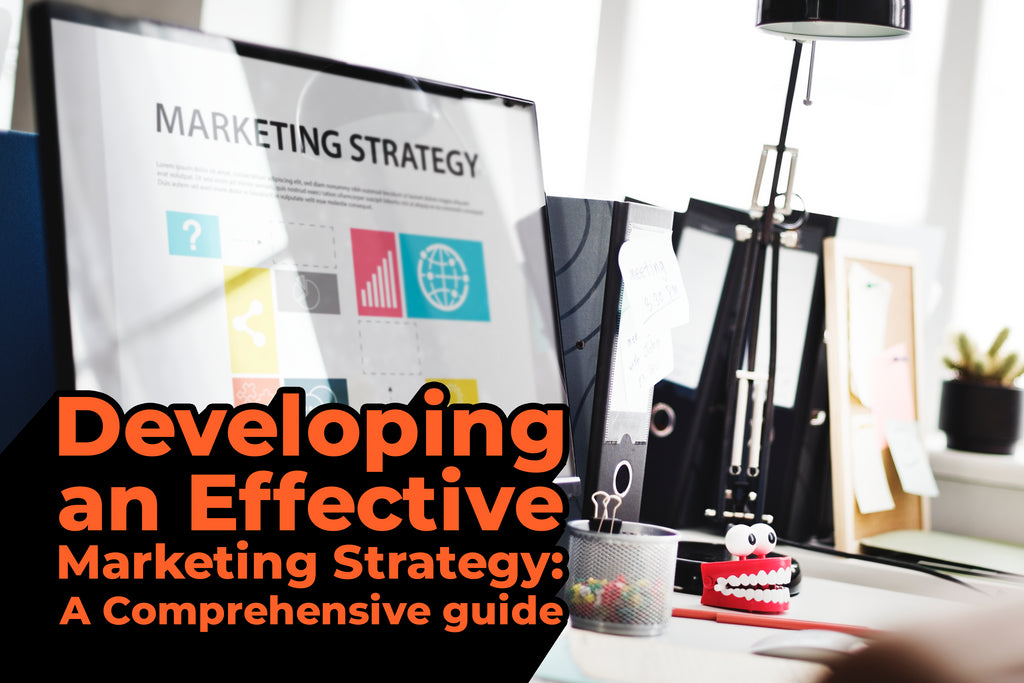Developing an Effective Marketing Strategy A Comprehensive Guide
Posted by ARTEMIO NERVEZ JR

In today's competitive business landscape, an effective marketing strategy is essential for success. A well-crafted strategy helps you reach your target audience, differentiate your brand, and achieve your business goals. This comprehensive guide will walk you through the key steps to develop a marketing strategy that drives results.
Step 1: Define Your Goals

Set Clear Objectives
- Determine what you want to achieve with your marketing efforts. Common goals include increasing brand awareness, generating leads, boosting sales, and improving customer retention.
Make Goals SMART
- Ensure your goals are Specific, Measurable, Achievable, Relevant, and Time-bound (SMART). For example, "Increase website traffic by 25% in the next six months."
Step 2: Understand Your Audience
Create Buyer Personas
- Develop detailed profiles of your ideal customers based on demographics, behavior, and preferences. This helps you tailor your messaging and marketing tactics to their needs and interests.
Conduct Market Research
- Use surveys, interviews, and data analysis to gather insights about your audience's pain points, buying habits, and preferred channels.
Step 3: Analyze Your Market and Competition

Perform a SWOT Analysis
- Identify your company's Strengths, Weaknesses, Opportunities, and Threats. This helps you understand your competitive position and identify areas for improvement.
Study Competitors
- Analyze your competitors' strategies, strengths, and weaknesses. Look at their product offerings, pricing, marketing channels, and customer reviews to find gaps and opportunities for differentiation.
Step 4: Develop Your Unique Value Proposition (UVP)
Identify Your Unique Selling Points
- Determine what makes your product or service unique and why customers should choose you over competitors. Your UVP should be clear, concise, and compelling.
Craft a Strong Brand Message
- Develop a brand message that communicates your UVP and resonates with your target audience. Ensure it aligns with your brand values and mission.
Step 5: Choose Your Marketing Channels

Identify the Best Channels for Your Audience
- Select marketing channels that your target audience frequents. Common channels include social media, email marketing, content marketing, search engine optimization (SEO), pay-per-click (PPC) advertising, and traditional media.
Diversify Your Channels
- Use a mix of channels to reach a broader audience and reduce reliance on any single platform. This also helps you adapt to changes in algorithms and market trends.
Step 6: Create a Content Plan
Develop a Content Strategy
- Plan the types of content you'll create (e.g., blog posts, videos, infographics, podcasts) and how they will support your marketing goals. Ensure your content is valuable, relevant, and engaging for your audience.
Set a Content Calendar
- Schedule your content creation and distribution to maintain consistency and ensure you cover key topics and events throughout the year.
Step 7: Implement Your Marketing Tactics
Execute Your Campaigns
- Launch your marketing campaigns across the chosen channels. Use a mix of organic and paid tactics to maximize reach and impact.
Leverage Marketing Automation
- Use tools to automate repetitive tasks like email marketing, social media posting, and lead nurturing. This saves time and ensures timely, personalized communication with your audience.
Step 8: Monitor and Measure Performance
Track Key Metrics
- Measure the performance of your marketing efforts using key performance indicators (KPIs) such as website traffic, conversion rates, customer acquisition cost (CAC), and return on investment (ROI).
Analyze Results
- Regularly review your data to identify what's working and what's not. Use these insights to optimize your strategy and improve future campaigns.
Step 9: Adjust and Refine Your Strategy
Stay Agile
- Be prepared to adjust your strategy based on performance data, market trends, and changes in your business environment. Staying flexible allows you to respond quickly to new opportunities and challenges.
Continuously Improve
- Seek feedback from customers, team members, and industry experts to refine your approach. Stay updated on the latest marketing trends and best practices to keep your strategy effective and relevant.
Conclusion
At VS Tees, developing an effective marketing strategy requires a thorough understanding of your goals, audience, and market dynamics. By following these steps, you can create a robust strategy that drives growth and helps achieve your business objectives. Stay focused, be adaptable, and continuously evaluate your performance to ensure long-term success.





